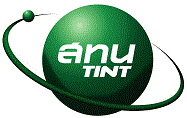BA10: การปรับปรุงคุณภาพด้านสุขอนามัยของปลาส้มฟักด้วยรังสีแกมมา
* ยุทธพงศ์ ประชาสิทธิศักดิ์ 1 , จารุรัตน์ เอี่ยมศิริ 1 , สุรศักดิ์ สัจจบุตร 1 วิชิต โรจน์กิตติคุณ 2 และสมจิต ภู่บำเพ็ญ 2
1 กลุ่มวิจัยและพัฒนานิวเคลียร์ สถาบันเทคโนโลยีนิวเคลียร์แห่งชาติ ( องค์การมหาชน)
16 ถ. วิภาวดีรังสิต เขตจตุจักร กรุงเทพฯ 10900 โทรศัพท์0 25967600 โทรสาร0 25790220
E-mail: yuthapop@yahoo.com
2 ภาควิชาปรสิตหนอนพยาธิ คณะเวชศาสตร์เขตร้อน มหาวิทยาลัยมหิดล
420/6 ถ.ราชวิถี เขตพญาไท กรุงเทพฯ 10400 โทรศัพท์0 23549100
บทคัดย่อ
ได้สำรวจคุณภาพทางจุลินทรีย์และเคมีของปลาส้มฟักจากแหล่งผลิตต่าง ๆจำนวน 32 ตัวอย่าง พบว่ามีการปนเปื้อนของ Escherichia coli เกินมาตรฐานผลิตภัณฑ์ชุมชนของปลาส้ม ( มผช. 26/2548) ในปลาส้มฟักจำนวน 2 ตัวอย่าง ( ร้อยละ 6.25) ส่วนคุณภาพทางเคมีได้แก่ ค่าความเป็นกรดด่างผ่านเกณฑ์มาตรฐาน มผช. 26/2548 และได้ศึกษาผลของปริมาณรังส ีแกมมา 2 , 4, 6, 8 และ10 กิโลเกรย์ที่มีต่อคุณภาพทางจุลินทรีย์ และเคมีของปลาส้มฟัก พบว่าการฉายรังสีปริมาณ 8 กิโลเกรย์สามารถลดปริมาณเชื้อจุลินทรีย์ทั้งหมดลง 6-8 log cycles เมื่อเทียบกับปลาส้มฟักที่ไม่ฉายรังสี นอกจากนี้ การฉายรังสีปริมาณ 4 และ 2 กิโลเกรย์สามารถกำจัดเชื้อ coliform bacteria และ E. coli ได้ตามลำดับ ส่วนค่าความเป็น กรดด่างไม่เปลี่ยนแปลงอย่างมีนัยสำคัญทางสถิติ (p<0.05) สรุปได้ว่าการฉายรังสีปริมาณ 8 กิโลเกรย์เพียงพอที่จะใช้ ปรับปรุงคุณภาพด้านจุลินทรีย์ของปลาส้มฟักโดยสามารถเก็บไว้ที่อุณหภูมิห้องได้ 6 วัน หรือเก็บที่อุณหภูมิ 5 องศาเซลเซียส ได้ 49 วันโดยคุณภาพทางประสาทสัมผัสไม่เปลี่ยนแปลงอย่างมีนัยสำคัญทางสถิติ (p<0.05) เมื่อเปรียบเทียบกับปลาส้มฟัก ที่ไม่ฉายรังสี
คำสำคัญ : อาหารฉายรังสี ปลาส้มฟัก รังสีแกมมา
BA10: Hygienic Quality Improvement of Fermented Fish (Pla-som) by Gamma Radiation
* Yuthapong Prachasitthisak 1, Jaruratana Eamsiri 1, Surasak Sajjabut 1, Wichit Rojekittikhun 2 and Somjit Pubumpen 2
1 Research and Development Division, Thailand Institute of Nuclear Technology (Public Organization), E-mail: yuthapop@yahoo.com
2 Department of Helminthology, Faculty of Tropical Medicine, Mahidol University.
420/6 Ratchawithi Rd. Phayathai Bangkok 10400 Tel.0 23549100
Abstract
Thirty-two samples of fermented fish (Pla-som) from commercial producers were evaluated for microbiological and chemical qualities. It was found that two samples (6.25%) did not meet the Thai Community Product Standard of Pla-som (TCPS.26/2548) because of the high level of Escherichia coli contamination. In addition, the chemical quality, namely pH, could meet the TCPS.26/2548. The effects of gamma radiation at the doses of 2, 4, 6, 8 and 10 kGy on microbiological and chemical qualities of Pla-som were also evaluated. Irradiation at 8 kGy could reduce the total viable bacterial count by 6-8 log cycles when compared to non-irradiated Pla-som. In addition, the results indicated that irradiation at 4 and 2 kGy effectively eliminated coliform bacteria and E. coli, respectively. The pH of irradiated Pla-som, pH did not change significantly when compared to non-irradiated Pla-som (p<0.05). From this study, it can be concluded that the irradiation dose at 8 kGy appeared to be sufficient for improving the microbiological quality of Pla-som . The irradiated Pla-som could be kept for 6 days at ambient temperature or 49 days at 5 ? C without significant differences on the sensory qualities when compared to non-irradiated Pla-som ( p<0.05) .
Keywords : irradiated food, fermented fish (Pla-som), gamma radiation |


